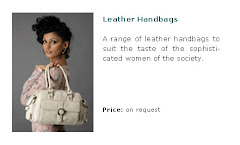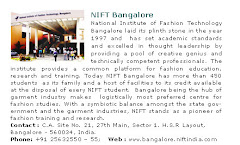Welcome back to our series on researching the trends in the fashion space on the subcontinent. Last post, we had observed that there was cause for concern, but still not too much to worry about. Continuing with our opinion one of the reasons that the condition is sad as far as Indian fashion magazines are concerned is that there are not more than 10 fashion magazines in the market, as it is still evolving,
Industry experts opine that the cost of production of these magazines is very high because good quality paper and pictures is a must for them. Since they appeal to a niche readership, many publishers would not be too keen on publishing them.The country's fashion books and fashion magazines market is estimated to be nearly Rs.250 million ($8 million) and about Rs.600 million ($15 million) respectively.In Pakistan and Sri Lanka, the market is more miniscule.
However, publishers are optimistic that the country's fashion literature market will flourish manifold in the next few years, courtesy the media boom and the increased visibility of international labels that arouses reader curiosity. So if you must invest in a fashion state, this is the right time to cash in on the media and fashion boom that seeks to sweep the subcontinent. Even as I type this, the subcontinent gears itself for this year’s Wills Lifestyle India Fashion Week is slated to be held at Delhi Pragati Maidan from March 12 to 16. Till then keep plugged on to Fashion Networks
Friday, February 29, 2008
Subcontinental Fashion Trends!- Part 2
Posted by
Fashion Networks
at
10:15 PM
0
comments
![]()
![]()
Subcontinental Fashion Trends! On the Decline?
We have so far seen the pride of the subcontinent- sarees. We shall explore the nuances of the subcontinental garment market, with regard to how open the subcontinental market is to newer fashion trends.
Indian designers may be making a mark across the world and the country may be dotted with fashion training institutes but there is a big dearth of seminal literature on the subject.
There are very few books and magazines each on fashion and very less titleson Indian textiles, handicrafts and techniques penned by domestic authors. Though India has people of the repute of Designer Ritu Kumar's Costumes and Textiles of Royal India, Abu Jani and Sandeep Khosla's A Celebration of Style, author Rta Kapur Chisti's Saris In India and Tradition and Beyond - Hand Crafted Indian Textiles and Hindol Sengupta's Indian Fashion are among the few on offer.
As far as fashion magazines go, there are In Touch With Fashion, Images Business of Fashion, M: Men Informed in Style, FNL: Fashion & Life Made Easy, Sports Wear, Couture India, Designer Mode and GQ to name some.
Says Namrata, a student of Fashion at NIFT, a famous institute for fashion in India "There are fewer than 10 indigenous books on fashion. But the market is flooded with international titles because we use them as reference books in most fashion institutes".
Everybody seems to be enamoured of Western fashion and wants to read about that. Even most of the subcontinental designers' collections are influenced by Western fashion. Unfortunately, when publishers approach style gurus to write a book on Indian fashion they do not show interest. So thats where a fundamental flaw is where at the root, the indigenous fashion is not developed well.
Most NIFT Faculty members reason that their approach is generic and global. Nonetheless they stress that homegrown fashion content would help students understand domestic market needs better.
"Our approach is global in which international books help a lot. But it can't be denied that if students read Indian they would understand the domestic market better because the country's weather, lifestyle and orientation are completely different," said Asha Baxi, senior professor and dean of academics, National Institute of Fashion Technology.
Sumeet Nair, executive director of the Fashion Design Council of India (FDCI), which organises the Wills Lifestyle India Fashion Week (WIFW), blames it on the "lack of fashion historians because of a nascent industry".
D.S. Mehta, secretary of the Sarabhai Foundation, a non-profit organisation dedicated to the promotion of science, art and literature, offers another reason for the lack of literature on the subject.
"Compared to foreign scholars, Indians are increasingly losing interest in conducting research on Indian textiles. They find it boring!" he said.
"Research work doesn't yield instant results. Moreover, it doesn't promise monetary benefits. So subjects like Indian textiles, handicrafts and techniques doesn't interest the youth," said author Rta Kapur Chisti.
For native fashion magazines the situation is no better.But still India has a lot of hope in the Fashion Market. Stay tuned to Fashion Networks to find out why next week.
Posted by
Fashion Networks
at
9:45 PM
0
comments
![]()
![]()
Sarees from the Subcontinent-Part 3
Welcome back! We were saying the Nivi style last week in various parts of India. Cining with the theme, The nivi drape starts with one end of the sari tucked into the waistband of the petticoat. The cloth is wrapped around the lower body once, then hand-gathered into even pleats just below the navel. The pleats are also tucked into the waistband of the petticoat They create a graceful, decorative effect which poets have likened to the petals of a flower.
After one more turn around the waist, the loose end is draped over the shoulder The loose end is called the pallu or pallav. It is draped diagonally in front of the torso. It is worn across the right hip to over the left shoulder, partly baring the midriff. The navel can be revealed or concealed by the wearer by adjusting the pallu, depending on the social setting in which the sari is being worn. The long end of the pallu hanging from the back of the shoulder is often intricately decorated. Some nivi styles are worn with the pallu draped from the back towards the front.
The Nivi saree was popularised through the paintings of Raja Ravi Verma. by modifying the south indian saree called mundum neriyathum. In one of his painting the Indian subcontinent was shown as a mother wearing a flowing nivi saree.
Lets see how the Nivi style has expanded across the subcontinent in the areas of Pakistan and Sri Lanka
In Pakistan, the wearing of saris has almost completely been replaced by the shalwar kameez for everyday wear, though it remains a popular dress for formal functions, especially weddings amongst the Pakistani elite, and is currently gaining interest. sari is sometimes worn as daily-wear, mostly in Karachi, by those elderly women who were used to wearing it in pre-partition India and by the some of the new generation who have re-introduced the interest of saris. The reason why the sari lost popularity in Pakistan, was due to it being viewed as a Hindu dress. Although she was seen wearing them Fatima Jinnah, the "Mother of the Nation", called the sari "unpatriotic" and Pervez Musharraf's wife stated that she never wears them.
Sri Lankan women wear saris in many styles. However, two ways of draping the sari are popular and tend to dominate; the Indian style (classic nivi drape) and the Kandyan style (or 'osaria' in Sinhalese). The Kandyan style is generally more popular in the hill country region of Kandy from which the style gets its name. Though local preferences play a role, most women decide on style depending on personal preference or what is perceived to be most flattering for their figure.
The traditional Kandyan (Osaria) style consists of a full blouse which covers the midriff completely, and is partially tucked in at the front as is seen in this 19th century portrait. However, modern intermingling of styles has led to most wearers baring the midriff. The final tail of the sari is neatly pleated rather than free-flowing. This is rather similar to the pleated rosette used in the 'Dravidian' style noted earlier in the article.Thats all from us in this series on Sarees from the subcontinent.
Posted by
Fashion Networks
at
9:36 PM
0
comments
![]()
![]()
Labels: Fashion, India, sarees, subcontinent
Tuesday, February 26, 2008
Sarees in the Subcontinent
Continuing with the saree series in the subcontinent, Wee now focus our attention to the West Indian state of Maharashtra. Maharashtrian/Kache – This drape (front and back) is very similar to that of the male Maharashtrian dhoti. The center of the sari (held lengthwise) is placed at the center back, the ends are brought forward and tied securely, then the two ends are wrapped around the legs. When worn as a sari, an extra-long cloth is used and the ends are then passed up over the shoulders and the upper body. They are primarily worn by Brahmin women of Maharashtra, Karnataka, Andhra Pradesh and Tamil Nadu.
Dravidian – sari drapes worn in Tamil Nadu; many feature a pinkosu, or pleated rosette, at the waist.
Madisaaru style – This drape is typical of Brahmin ladies from Tamil Nadu and Kerala
Kodagu style – This drape is confined to ladies hailing from the Kodagu district of Karnataka. In this style, the pleats are created in the rear, instead of the front. The loose end of the sari is draped back-to-front over the right shoulder, and is pinned to the rest of the sari.
Gond – sari styles found in many parts of Central India. The cloth is first draped over the left shoulder, then arranged to cover the body. There is also the two-piece sari, or mundum neryathum, worn in Kerala. Usually made of unbleached cotton and decorated with gold or colored stripes and/or borders.
Finally the style to look out for- tribal styles – often secured by tying them firmly across the chest, covering the breasts.
The nivi style is today's most popular sari style, and stay tuned to the FN blog for more updates on the Nivi style.
Posted by
Fashion Networks
at
7:26 PM
0
comments
![]()
![]()
Labels: Andhra Pradesh, Fashion, India, Kerala, Maharashtra
Thursday, February 14, 2008
Subcontintental Sarees
Having seen a how the South Indian silk saree industry is, lets focus our attention to the saree market in general in the subcontinent. There are many style in wearing the saree, and the most common style is for the sari to be wrapped around the waist, with one end then draped over the shoulder baring the midriff. Ok, thats fine, but is the sari worn over something? Yes it is, The sari is usually worn over a petticoat (pavada/pavadai in the south, and shaya in eastern India), with a blouse known as a choli or ravika forming the upper garment. The choli has short sleeves and a low neck and is usually cropped, and as such is particularly well-suited for wear in the sultry South Asian summers. Cholis may be "backless" or of a halter neck style. Infact there is a very famous Indian number on “cholis” from an erstwhile hindi flick called Khalnayak. These saris across the subcontinent are usually more dressy with a lot of embellishments such as mirrors or embroidery and may be worn on special occasions.
However, the sari can be draped in several different styles, though some styles do require a sari of a particular length or form.
Some basic classifcations of Saris can be the following
Nivi – This style originally worn in Tamil Nadu; besides the modern nivi, there is also the kaccha nivi, where the pleats are passed through the legs and tucked into the waist at the back. This allows free movement while covering the legs. So if you happen to visit India sometime this summer, and are beach bumming at Mahabalipuram, do take some time off to visit Chennai, where you should be exposed to quite a few interesting designs.
North Indian/Gujarati – From the southern part of India to the western part, we find that the Gujrati style differs from the nivi only in the manner that the loose end is handled: in this style, the loose end is draped over the right shoulder rather than the left, and is also draped back-to-front rather than the other way around. Right now, we dont have pictures, but I will ask a few of my Indian friends to respond.
Thats it for this week. Keep cued in to FN and this blog for more updates on Indian saree classifications and some from Asia.
Posted by
Fashion Networks
at
8:49 PM
0
comments
![]()
![]()
Sunday, February 3, 2008
A Peek into Indian Silk
Today we talk about Indian Textiles and in that series comes the town of Kancheepuram. This town is also known as Silk City since the main profession of the people is weaving silk sarees. The silk weavers of Kanchi settled more than 400 years ago and have given it an enviable reputation as the producer of the best silk sarees in the country.
Its economy is entirely dependent on tourism and the well-established handloom industry. Kancheepuram has thousands of handlooms and skilled weavers that make its silk sarees one of the best in the entire world. About 75% of the city's population are associated with the handloom industry in some way.
Did you know that the Kanchipuram Silk Saree is hand-woven with dyed silk yarn with interleaved designs made with 'Zari' - a Silk thread twisted with a thin Silver wire and then gilded with pure Gold. The FN team found out that the Kanchi silk thread used for weaving Kanchipuram Sarees is made up of three single threads twisted together.Woven from pure mulberry silk and have an enviable reputation for texture, lustre, durability and finish. Hence, the Kanchipuram Silk Saree is usually stronger (and more expensive) than its counterparts from Arni, Dharmavaram, etc. However, the designs on the Saree itself are what brings it the fame. Given below are two pictures depicting the Kanchi Silk.

MYSORE is known for its silk. For over seven decades, Mysore silk, with its unique sheen and regal look, amazing drape, pure yarn and zari, has held its own among all other silk fabrics from India and abroad. Today, it is the Karnataka Silk Industries Corporation (KSIC) which holds aloft the State's supremacy in silk and silk products, from classy dress material, stoles, and furnishings to the most resplendent of saris.
Though the origins of the Mysore Silk Factory date back to 1912, organised production of fabric started only in 1932, after a small quantity of raw silk was tested in Switzerland for quality. Looms installed in the factory were also imported from Switzerland, and most of them have survived to this day.

In 1980, after it was handed over to the KSIC, the whole factory was modernised. The KSIC ensures that the raw silk goes through a complex production process, to meet the high quality standards expected of Mysore silk.That was a brief about 2 major silk hubs in India. Expect more about Indian textiles next week. Till then stay plugged on to FN
Posted by
Fashion Networks
at
9:50 AM
0
comments
![]()
![]()
Labels: Fashion, India, Kanchipuram, Mysore, Silk
Friday, February 1, 2008
Moving to the Subcontinent
We have so far previewed International Fashion Trends and have decided to focus our attention on the subcontinent India for its unique flavours in terms of fashion. Since the FN team has an India office, we decided to get some inputs from them,as to why India/subcontinent is doing very well in the textile/apparel space.
It is multicultural with a rich diversity of languages and traditions, and it is diversity that manifests itself with India being painted in different colours across the country, even though it stands unified. We will preview Indian fashion pertaining to Business analysis of Textile growth. The total Indian domestic textile market is about $25 billion, while its exports are worth $13 billion. The Indian textile industry has the hand spun woven sector and the capital intensive sophisticated mill sector.India is the largest producer of Jute and the second largest producer of Silk, while being the third largest producer of cotton.
a) Large raw material base - India has a rich raw material base, especially cotton which has seen improved productivity in the country under the Cotton Technology Mission.Apart from that a wide variety of cotton produced India, making India capable of catering to various segments of world trade. The Indian industry has ability to handle different materials - cotton, wool, silk and jute with equal skill
b) Positive developments in the Textile Policy . Reservation for small scale sector, especially key segments removed over last few years and Fiscal anomalies in terms of excise duty structure have been removed
c) Flexibility in production-Capabilities across the entire value chain within the country reduces lead time for production and reduces intermediate shipping time.Indian companies have flexibility and skilled manpower to handle small orders with complex designs.
d) Product development and design capabilities- Apart from this, if one has to look at world famous brand names that buy from India, one finds one of the best names in fashion queing up in India.The Top 10 buyers in India (Gap, Wal-Mart, Li & Fung, The Children’s Place, JC Penny, H&M, Federated, Fifth Avenue, Carrefour and Synergies India) account for 35% of total textiles sourced from India. Other major companies include El Corte, Ecko, Kellwood, VF Corporation, Tesco, Next, Karstadt-Quelle
Our next series of articles will talk about specific Examples of Indian Fashion.Still then stay plugged on to our Fashion Blog, and check www.fashion-networks.com







